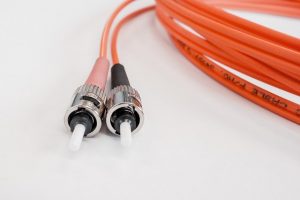
Are you looking to buy fiber optic cables? If so, you’ll need to choose the right type. Also known as optical fiber cables, fiber optic cables are used in long-distance telecommunications applications. They offer a faster and more reliable vehicle for data transmissions than copper cables. Not all fiber optic cables are the same, however. For tips on how to choose the right fiber optic cables, keep reading.
Individual vs Bundled Fibers
All fiber optic cables consist of many thin strands of a transparent and flexible material. These strands are known as optical fibers, and they are responsible for carrying data from one end of a cable to the other end. Some fiber optic cables have individual fibers, whereas others have bundled fibers. With bundled fibers, the strands are bound together to form a ribbon. Either type will work, though bundled fibers are usually better suited for applications in which the fiber optic cables will be turned or twisted.
Jacket Material
Don’t forget to check the jacket material when choosing fiber optic cables. Like with most other cables, fiber optic cables are covered in a layer of a nonconductive material. Known as a jacket, it shields the underlying fibers so that they are protected from damage as well as signal or data loss.
Some of the most common jacket materials for fiber optic cables include the following:
- Polyvinyl chloride (PVC)
- Low-smoke zero halogen (LSZH)
- Polyethylene
- Polyurethane
- Polyamide
Loose-Tube Construction
Depending on where and how you intend to them, you may want to choose fiber optic cables with a loose-tube construction. Loose-tube means the fibers are arranged helically so that the fiber optic cable can stretch without sustaining damage. If the cable stretches, the fibers will stretch with it. At the same time, a loose-tube construction protects the fibers from temperature fluctuations.
Connector Type
Of course, you’ll need to consider the connector type when choosing fiber optic cables. All fiber optic cables have a connector on both ends. Connectors allow them to “connect” to devices. You can find fiber optic cables with a variety of different connector types. Some of them have a straight-tip connector, whereas others have a bayonet connector or multi-fiber connector.
Length
It’s important to choose fiber optic cables in an appropriate length. They need to be long enough to reach the devices to which they connect. If a fiber optic cable is too short, you won’t be able to use it. You can avoid this headache by choosing the correct size.
